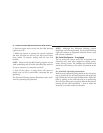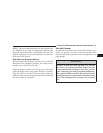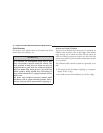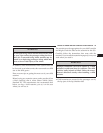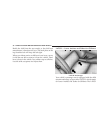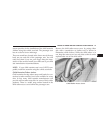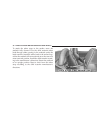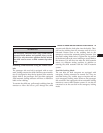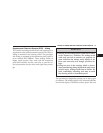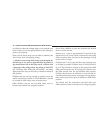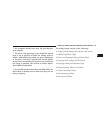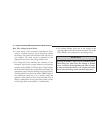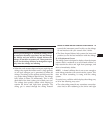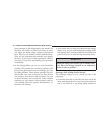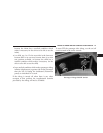
To convert the emergency locking mode to automatic
locking mode for seat belts equipped with automatic
locking retractors, grasp on the shoulder belt portion of
the belt and pull all of the webbing out of the retractor. By
allowing some of the webbing to retract back into the
retractor, you will hear a clicking sound indicating that
the belt is now activated to automatic locking mode.
Once it is in the automatic locking mode you will not be
able to pull any more of the webbing out of the retractor,
but will only be able to feed back excess webbing to
secure the child restraint. To disengage the automatic
locking mode, simply allow all of the webbing to retract
back into the retractor which will switch the seat belt to
emergency locking mode for normal use.
Children Too Large For Child Seats
Children who are too large for child seats and who can sit
upright by themselves should use the lap/shoulder belt
for best protection.
•
Make sure that the child is seated upright in the seat.
•
The lap belt should be low on the hips and as snug as
possible.
•
Check belt fit periodically. A child’s squirming or
slouching can move the belt out of position.
•
If the shoulder belt contacts the face or neck, move the
child closer to the side of the vehicle.
Booster seats that may help overcome this problem are
also available for use with lap/shoulder belts. Before
buying a booster seat, make sure that it has a label
certifying that it meets applicable Motor Vehicle Safety
Standards. Make sure that it is satisfactory for use in this
vehicle.
40 THINGS TO KNOW BEFORE STARTING YOUR VEHICLE



